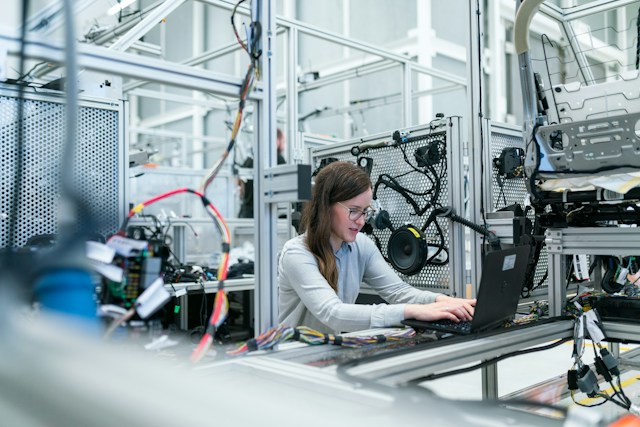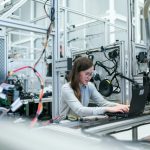In a world where technology is swiftly being integrated into all aspects of life, one area that is seeing significant development and research is healthcare. From wearable fitness trackers that monitor heart rate and sleep patterns to AI-assisted surgical procedures, technology has undeniably proven to be a game-changer. One such innovative breakthrough is the integration of sensor technology in shoes – an attempt to help prevent falls in the elderly. This article will delve into the potential impact and effectiveness of this revolutionizing approach.
The Prevalence of Falls in the Elderly
It’s no secret that falls among the elderly are a prominent health concern. While they might seem insignificant and commonplace, they can lead to severe, often life-threatening injuries. It is estimated that one in four people aged 65+ encounters a fall each year, making them the leading cause of fatal injuries among this demographic.
En parallèle : Navigating Data Compliance in Clinical Trials: A Practical Approach
The reasons behind falls can be physical, environmental, or a combination of both. Reduced muscle strength, impaired vision, medication side effects, and unsafe home conditions are some of the common contributors. However, the most challenging part is predicting and preventing these falls – this is where sensor technology steps in.
What is Sensor Technology?
Before diving into the effectiveness of sensor technology in shoes, it’s essential to understand what it actually is. Sensor technology involves the use of devices that respond to physical input such as light, heat, motion, moisture, pressure, or any other environmental phenomenon, and convert it into readable, usually electronic, signals.
A voir aussi : What Is the Role of Diet in Managing Symptoms of Polymyalgia Rheumatica?
In the context of shoes, sensor technology can take different forms. Some shoe models are equipped with pressure sensors to assess the gait of the wearer. Others use accelerometers and gyroscopes to detect motion and orientation. These sensors can provide real-time feedback and data, allowing the wearer or caregiver to monitor any irregularities in walking patterns, balance, or foot pressure that may signal a heightened risk of falls.
Sensor Technology in Shoes: How Does it Work?
The implementation of sensor technology in shoes is not as complex as it may sound. The shoe, equipped with sensor technology, can track and analyze the user’s gait through the pressure applied on different parts of the foot during walking. The data collected is then transmitted to a device, typically a smartphone or computer, via Bluetooth or another wireless connection.
Using advanced algorithms, these data points can be analyzed to track changes over time or to identify sudden anomalies that might indicate a stumble or fall. For example, a sudden change in pressure distribution could indicate a stumble, while a sharp decrease in movement could signal a fall.
Does Sensor Technology in Shoes Help Prevent Falls?
The big question is, of course, does this technology actually help in preventing falls in the elderly? In essence, the answer is mostly positive. Research has shown that sensor technology in shoes has potential in predicting and preventing falls.
One key advantage is the ability to monitor gait in real-time. By doing so, irregularities can be detected early, allowing for preventative action. This could be as simple as adjusting the fit of the shoe, changing walking habits, or seeking medical advice. The fact that this data is concrete and quantifiable allows for more tailored solutions based on individual needs.
Moreover, some shoes with sensor technology are designed to provide real-time feedback to the wearer. For instance, if the sensors detect imbalance or incorrect foot placement, the shoes might vibrate to alert the wearer, allowing them to correct their stance or movement immediately.
While there is promising evidence to suggest that sensor technology in shoes can aid in preventing falls, it is important to note that it is not a foolproof solution. The technology cannot prevent falls caused by external factors such as slippery surfaces or cluttered pathways. Therefore, while sensor technology in shoes is a step in the right direction, it should be used as a part of a comprehensive fall prevention strategy, rather than as a standalone solution.
Future of Sensor Technology in Shoes
The integration of sensor technology in shoes is only in its initial stages. As advancements take place and the technology becomes more refined, we may see more precise detection and prediction capabilities.
One potential development could be the integration of AI technology to better analyze data and predict falls. This could involve machine learning algorithms being trained to recognize patterns in gait and pressure data that indicate an increased risk of falls.
In summary, while the integration of sensor technology in shoes alone might not eliminate falls in the elderly, it definitely offers a promising approach to mitigating the risks. As technology continues to evolve, we can only expect this innovative solution to become more sophisticated and effective in the fight against falls among the elderly.
Enhancing Fall Detection and Risk Assessment with Sensor-Based Shoes
As technology becomes increasingly sophisticated, sensor-based shoes are emerging as a promising tool for fall risk assessment. Emphasizing on their design, these shoes incorporate a multitude of wearable sensors, including pressure sensors and inertial sensors, that monitor and identify any irregularities in the wearer’s gait.
As per the data registered on Google Scholar and Scholar Crossref, the integration of these wearable devices into footwear can help detect patterns of gait variability which might indicate an increased risk of falling. It is observed that older adults tend to exhibit more gait variability compared to their younger counterparts. This variability, when detected, can potentially serve as a warning sign of an impending fall, allowing for timely corrective measures.
In addition, certain sensor-based shoes also feature obstacle detection technology. This function utilizes sensors to scan the surrounding environment for potential hazards that could cause a fall. If an obstacle is detected, the shoe can send a warning to the wearer, thereby helping prevent a fall before it occurs.
Further supplementing this technology, machine learning and deep learning algorithms can be employed to analyze the data collected by the sensors. Through this integrated approach, a comprehensive fall assessment can be performed, which not only identifies risk factors, but also aids in designing personalized fall prevention strategies.
However, in spite of these advancements, it’s worth noting that the use of sensor technology in shoes should not replace traditional fall prevention methods. Instead, they should be viewed as an additional tool to enhance the overall approach towards fall risk management among the elderly.
Conclusion: The Potential of Sensor Technology in Shoes
In conclusion, the introduction of sensor technology in shoes for older adults presents an innovative approach to fall prevention. The research trend observed in recent international conferences suggests that this technology can greatly aid in reducing the frequency and severity of falls among the elderly.
Utilizing a variety of sensors, these shoes can monitor gait patterns, detect anomalies, and even identify potential obstacles. When combined with cutting-edge technologies such as machine learning, the data obtained can be used to perform comprehensive gait analysis and generate personalized fall risk assessments.
However, it is crucial to remember that while this technology represents a significant step forward, it is not a standalone solution. To effectively reduce falls among older adults, it should be utilized in conjunction with traditional fall prevention strategies.
In the future, as technology advances further, sensor technology in shoes could potentially become more refined, offering even more precise detection and prediction capabilities. The future indeed seems promising, and as we move forward, these wearable sensor technologies are expected to play an increasingly integral role in enhancing the quality of life and safety of older adults.











